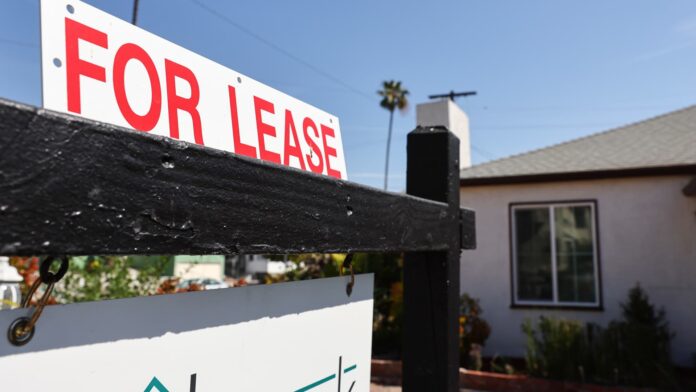A house is available for rent on March 15, 2022 in Los Angeles, California.
Mario Tama | Getty Images
Residential rents have risen slightly over the past few months as spring activity begins, which is seasonally stronger. But in March they were only 2.6% higher than in March 2022.
That’s the smallest annual gain since April 2021, according to Apartment List. And after last year’s record pace, rental growth is now slightly below the 2.8% pre-pandemic average. Some markets like San Francisco fall more.
Vacancy rates are also starting to rise back to normal levels as more offers come onto the market. They are at 6.6%, up from 6.4% in February.
According to RealPage Market Analytics, there were over 917,000 housing units under construction in the US at the end of last year, which will increase the country’s existing housing base by 4.9%. This is the highest number of units under construction since the early 1970s.
“Even as demand continues to pick up, a robust supply of new inventory entering the market this year should keep prices under control. It looks like 2023 will be a year of slightly positive rental growth,” Apartment List researchers noted in the report.
The markets with the largest year-over-year rent jumps were primarily in the Midwest, with Chicago, Indianapolis, Cincinnati and Louisville all up 6%. Rents in Boston rounded out the top five, also up 6%.
Rents are falling in several major cities. Rents in Phoenix and Las Vegas fell 3% year over year, and in San Francisco they fell 1%.
Rents for single-family homes are also relaxing, but are still significantly higher than rents for apartments. According to CoreLogic, single-family home rental growth in January was 5.7% year over year, the slowest rate of increase since spring 2021.
Of the 20 major markets tracked by CoreLogic, Orlando, Florida had the highest year-over-year rental growth at 8.9%, but that’s down from the recent peak of 25% annual growth in April 2022. Miami posted 39% annual growth last January, but this year it’s down to about 7%.
“While rental growth is slowing at all observed price levels, the declines in the cheapest rents are not as significant, raising affordability concerns. Annual rental growth for lower-tier properties was about three times what it was before the pandemic, while increases at the highest tier were nearly one-and-a-half times over the same period,” Molly Boesel, chief economist at CoreLogic.















